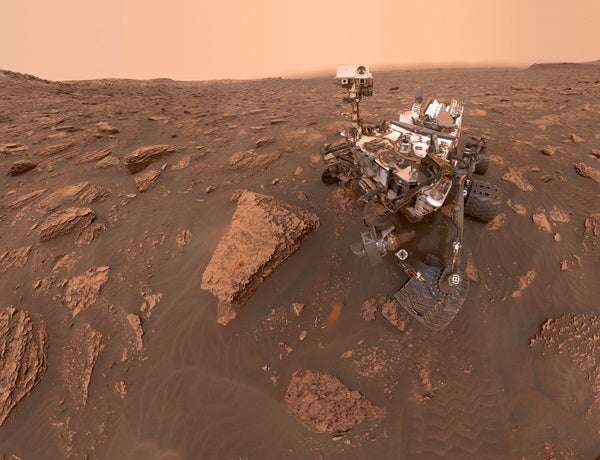The dust storm, though not unexpected, is a bit untimely — Mars is quickly approaching opposition in July, with its closest approach to Earth occurring shortly after. This setup normally affords excellent views of the planet’s surface features, which certainly won’t be the case if it’s buried under a thick cloud of dust. Regional dust storms are common, but scientists aren’t entirely sure what causes them to occasionally grow into PEDEs. The planet’s dust storms are typically prompted by warming as the planet approaches its closest point to the Sun; temperature contrasts generate winds that pick up and spread fine surface dust grains. As the polar ice caps melt, the additional carbon dioxide in the atmosphere increases surface pressure and suspends the particles in the air, sometimes in clouds reaching up to 40 miles (60 kilometers) high.
Curiosity captured this sequence of daily images looking out from the interior of Gale Crater, watching as the surroundings grew hazier.
Following the decline of available sunlight as dust blocked the sky, operators believe the 14-year-old Opportunity rover shut down following a low-power fault (which simply means her solar panels cannot generate enough energy to recharge her batteries). The rover is designed to continue counting time, waking up periodically to determine whether the sky has cleared and the solar panels have refilled the batteries. While Opportunity has survived dust storms in the past, the intensity and anticipated longevity of this one could be a problem. A possible mission clock fault could make recovering the rover more difficult, but not impossible. And if too much time passes, the rover’s batteries may discharge completely, affecting their long-term capacity.
According to the Mars Exploration Rovers website, “The plan is to continue this every day while waiting for the skies to clear. The team does not expect to hear anything from Opportunity until there has been a significant reduction in the storm and the associated atmospheric opacity over the rover site.”
Meanwhile, Curiosity — which relies on a nuclear-powered battery, rather than solar power — continues to work, albeit under a thickening haze of dust already measured at greater opacity than ever before. When its most recent selfie was taken, the haze around Curiosity was already six to eight times thicker than normal for this time of the martian year. The rover’s engineers estimate minimal impact to the rover’s hardware from the storm, though the rover is currently pointing its camera downward after each use to minimize the effects of blowing dust on the optics.
Though the storm may diminish viewers’ enjoyment of this year’s Mars opposition, it will improve our understanding of how such storms arise, evolve, and impact the planet. With rovers on the surface and orbiters circling overhead, Mars is under constant surveillance with instruments offering detailed, high-resolution views of this global event.










